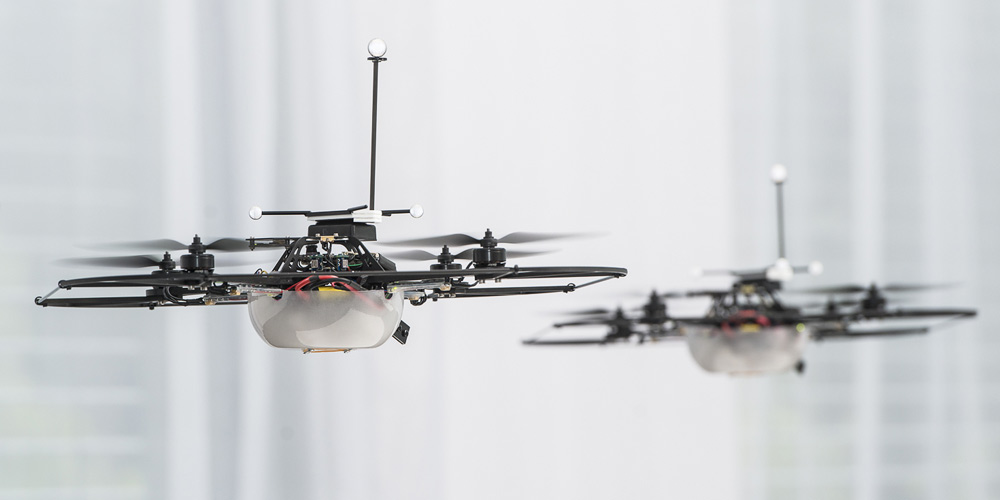
Ars Electronica Futurelab (AT)
The Spaxels Research Initiative (SRI) is a loose association of partners in industry and research whose shared interest in swarms has brought them together. Each one—NTT, Audi, Autodesk, Tangible Bits, et al.—pursues this project in accordance with its own particular aims.
The first order of business is to hack our way through the definitional jungle—after all, swarm is a term that is often interpreted very broadly and freely. But, in fact, what the Spaxels Research Initiative (SRI) is all about is coordinated, autonomous & semi-autonomous robotic vehicles. The term swarm is not explicitly derived from swarm behavior; it also encompasses formations like centrally coordinated fleets.
Heading Ars Electronica’s agenda here is illuminating the interplay of human beings (and society) with (future) mobile swarms. To accomplish this, we have constructed a series of prototypical arrays—the Spaxels, for instance—as a means of exploring the topic “Swarm and Human, Swarm and Society.”
The discussion of Isaac Asimov’s Three Laws of Robotics and the attempt to expand on them suffices to deal with the individual case of how a robot must behave towards a human being. But what should be the behavior of a diverse assortment of numerous mobile robots communicating with each other in a network? Does this call for something like Swarm Laws to govern the interaction between mechanical swarm and human(ity)?
Like the Spaxels in the entertainment field, the deployment of coordinated robotic vehicles increasingly takes place in the public sphere—for instance, cars are beginning to join together to form “thinking organisms.”
But what does the encounter with swarms mean for the individual and for our society? Is there a “common framework” for swarms and their deployment in all their various manifestations that all the stakeholders can share here?
Is artificial intelligence implemented in dispersed fashion among the members of coordinated systems a solution? Or is that the problem itself?
How does humankind live in and communicate with an environment filled with vehicles that are potentially more intelligent—and certainly better networked—than we are? And what must this environment be capable of doing?
These are all huge questions, none of which can be answered at a conference. But answering questions is also not the point of a conference. Rather, at the top of our agenda is a determination of where we stand now. What are the positions of the participants in this discussion and what are their perspectives? With this as our point of departure, we will embark on a search for the common challenge that everyone in this field is, of necessity, actively facing. Accordingly, kicking off this conference will be a process of exchange in which the partners sketch their respective positions.
SO Sept. 10, 2017
| 1:15 PM–1:35 PM | Horst Hörtner (AT), Senior Director Ars Electronica Futurelab Introduction to the Spaxels Research Initiative |
| 1:35 PM–1:50 PM | Shingo Kinoshita (JP), Executive Research Engineer Supervisor at NTT, Swarms as a Communication Medium |
| 1:50 PM–2:05 PM | Isabelle Borgert (DE), Connected Car & In-Car Technology, Audi AG, Swarm intelligence: What Cars and Bees do have in Common |
| 2:05 PM–2:20 PM | Hiroshi Ishii (JP/US), Co-Director MIT Medialab Tangible Bits |
| 2:20 PM–2:35 PM | Philipp Müller (AT/US), Program Manager AEC EMEA, Autodesk Education Experiences, Future of Making with Swarms |
| 2:35 PM–2:50 PM | Sepp Hochreiter (AT), Head of Institute of Bioinformatics, Johannes Kepler University Linz |
This event is realized in the framework of the European Digital Art and Science Network and co-funded by the Creative Europe program of the European Union.

